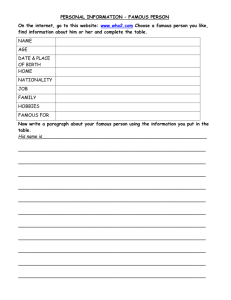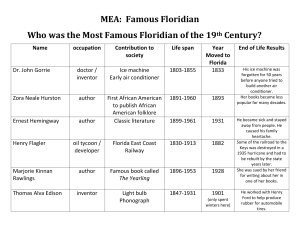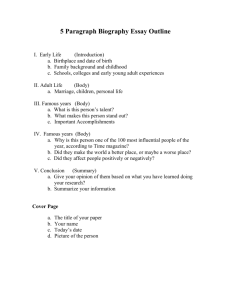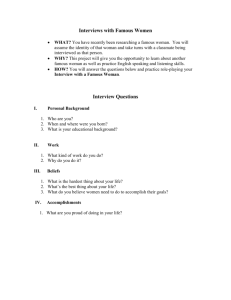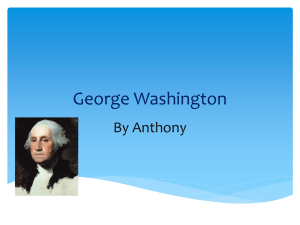Westward Expansion Study Guide Lewis and Clark Expedition
advertisement
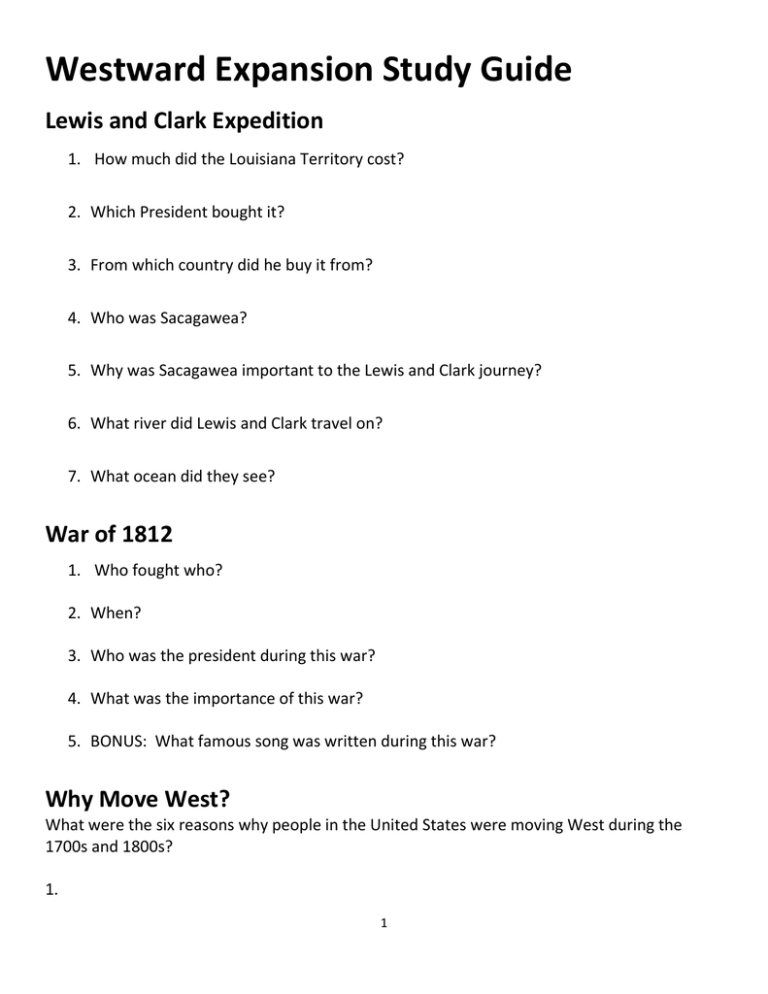
Westward Expansion Study Guide Lewis and Clark Expedition 1. How much did the Louisiana Territory cost? 2. Which President bought it? 3. From which country did he buy it from? 4. Who was Sacagawea? 5. Why was Sacagawea important to the Lewis and Clark journey? 6. What river did Lewis and Clark travel on? 7. What ocean did they see? War of 1812 1. Who fought who? 2. When? 3. Who was the president during this war? 4. What was the importance of this war? 5. BONUS: What famous song was written during this war? Why Move West? What were the six reasons why people in the United States were moving West during the 1700s and 1800s? 1. 1 2. 3. 4. 5. 6. What were the four economic opportunities that inspired people to move west? 1. 2. 3. 4. What is Manifest Destiny? Land Acquisition A. 1. 2. 3. Louisiana Purchase What was the land bought from France by Jefferson in 1803? What was this purchase’s importance? Who explored this newly bought land? B. Florida 1. What year was Florida added? 2. What was the advantage to the United States of acquiring Florida? C. Texas 1. What year was Texas added? 2. What was the advantage to the United States of acquiring Texas? D. Oregon Territory 1. What year was Oregon added? 2 2. What was the advantage to the United States of acquiring Oregon? E. Mexican Cession 1. What year was the Mexican Cession added? 2. What was the advantage to the United States of acquiring the Mexican Cession? F. Gadsden Purchase 1. What year was the Gadsden Purchase added? 2. What was the advantage to the United States of acquiring the Gadsden Purchase? Inventions Problem: Farmers had to harvest wheat had to do so by hand using a sickle. Doing this by hand took a long time, and farmers would typically only grew enough wheat to feed their own families. (Wheat is used to make flour, which is used to make bread.) They were not making enough to sell to others to make money. Solution: Inventor: Impact: Problem: Communication and information (through letters, etc.) took a long time to get from one place to another. Sometimes weeks or even months would go by before two people living on either side of the country would be able to receive a response from the other person or alert them to important news. Solution: Inventor: Impact: Problem: In order for cotton to be woven into cloth, all the seeds have to be removed. Slaves were picking these seeds out by hand. One slave could clean one pound of cotton per day. It took a long time and not a lot of cotton was able to be sold. Solution: Inventor: 3 Impact: Problem: Going up river was very difficult. You had to fight against the moving current of water flowing against your boat all the time. Pushing a boat up river was a very slow and difficult process. As America expanded westward, rivers became a very important route for transportation, so this became an even bigger problem. Solution: Inventor: Impact: Problem: As people started moving across the country, the only options were stagecoaches, Conestoga wagons, horses, or feet. The main challenge facing the western settlers was getting products and supplies to and from the East. Taking them by foot or carriage took a long time and it could be very dangerous. Solution: Inventor: Impact: Women’s Suffrage Movement 1. What is suffrage mean? 2. What did the people who fought for women's suffrage believe? 3. In the 1800s, women had the following disadvantages: 1. 2. 4 3. 4. 4. When did women receive the right to vote? 5. What Amendment gave women the right to vote? 6. Who was Elisabeth Cady Stanton, and what is she famous for? 7. Who was Sojourner Truth, and what is she famous for? 8. Who was Susan B. Anthony, and what is she famous for? Abolition Movement 1. Where were most slaves taken from by slave traders? 2. Where were slaves sold in America? 3. What kinds of work did slaves do? 4. What happened to slave children? 5. By 1860, how many slaves existed throughout the South? 6. What was the Southern economy dependent on? 7. What were the Southern plantations competing with? A. What were the “benefits” of slavery? 1. 5 2. B. What were the bad things about slavery? 1. 2. 3. 4. C. What does abolition mean? D. Who were abolitionists? E. What were the three beliefs all abolitionists held? 1. 2. 3. D. Famous Abolitionists 1. Who was Harriet Tubman, and what is she famous for? 2. Who was William Lloyd Garrison, and what is he famous for? 3. Who was Frederick Douglass, and what is he famous for? 4. Who was Harriet Beecher Stowe, and what is she famous for? 6 5. Who was John Brown, and what is he famous for? 7
